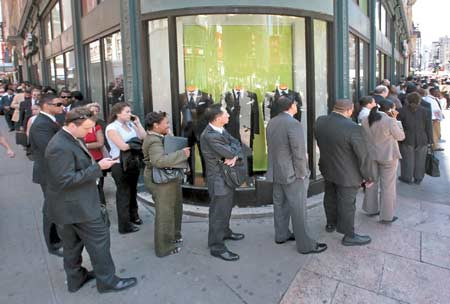
The Difference between 2 and 3 Percent
(South Korea) on 19 July 2011
by Hak-in Lee (link to original)
Although two years have passed since the National Bureau of Economic Research (NBER) officially declared an end to the recession, the U.S. economy remains stagnant. The term “New Normal” often appears throughout today’s media to express this state. This concept was first developed by PIMCO CEO Mohamed A. El-Erian in 2008 to characterize the economy in the five to 10 year period after the global financial crisis. Slow growth, reduced consumption, a lessened American influence in the world economy and stronger regulations are components of the “New Normal.”
Last month, the Federal Reserve Board (FRB) lowered the projected 2011 growth rate of the U.S. economy from three to 2 percent after taking into account the negative consequences of events like the Japanese earthquake. While two and 3 percent seem like simple figures, the decrease marks a significant difference.
In the case that the American economy were to enjoy a 3 percent annual growth, nearly 1.6 million jobs would be created to flesh out a much-needed increase in the labor force. A mere 2 percent growth rate would, however, only lend itself to roughly 700,000 new jobs. This is not enough to absorb the ever-increasing numbers of people in search of work and would ultimately lead to a higher unemployment rate. Renowned Moody’s analyst Mark Zandi accordingly predicted that, should the U.S. economy only grow at an average rate of 2.5 percent for the next five years, the unemployment rate would once again rise into double digits. Joblessness would eventually soar to 12 percent after 10 years of such slow growth.
This would also have a big impact on consumption and the country’s overall finances. If the growth rate wavered between two and 3 percent for the next 10 years, income disparity between households would reach up to $17,000. It is also estimated that a continued 2 percent growth rate would cause the U.S. government’s budget deficit to exceed 10 percent of annual GDP, while a continued 3 percent growth rate would halve the deficit.
The direness of this economic crisis is such that there are even mentions of a third quantitative easing. On top of it all, Americans are increasingly troubled by Washington’s ongoing debt ceiling war. These compounding situations threaten to drive an already limp U.S. economy to total collapse.
